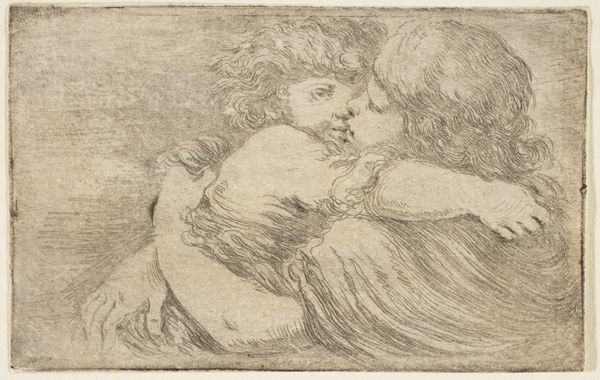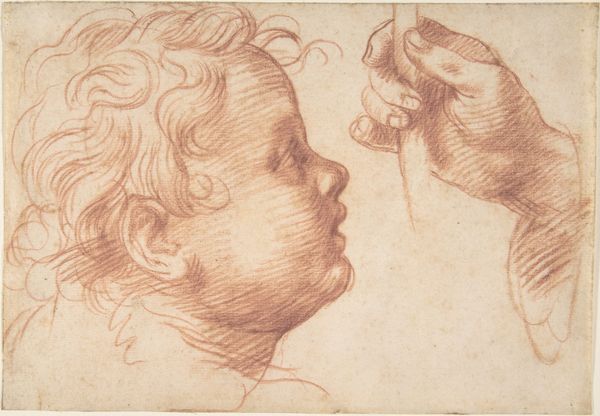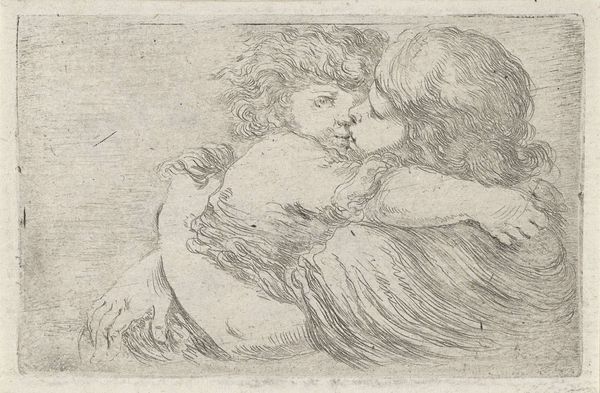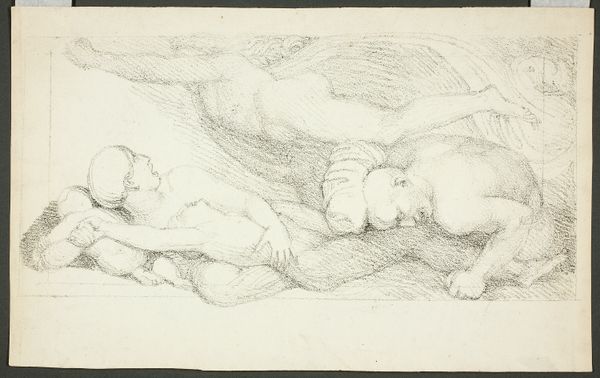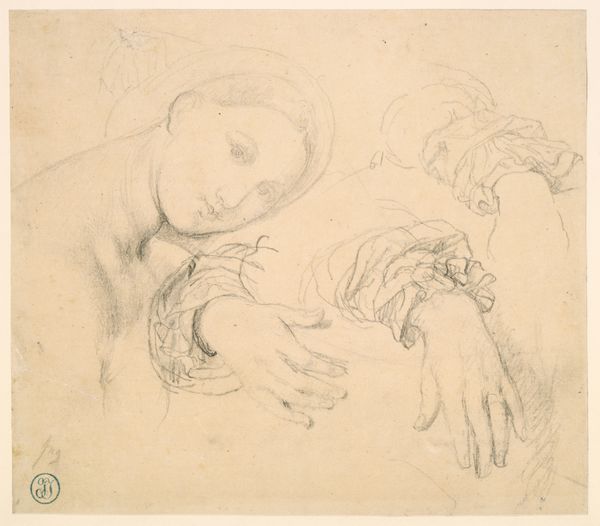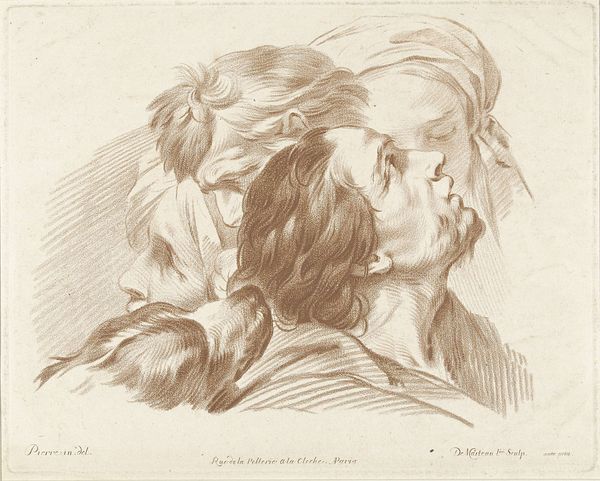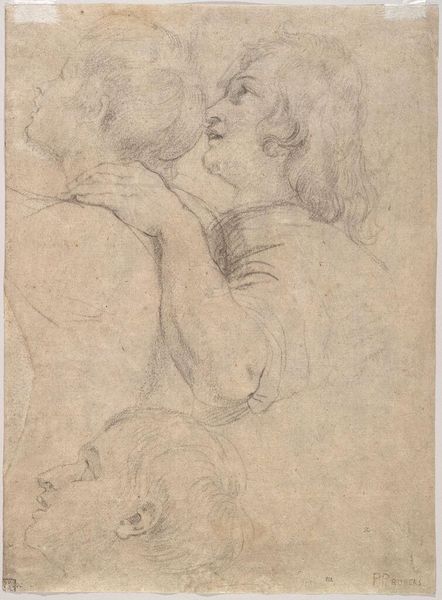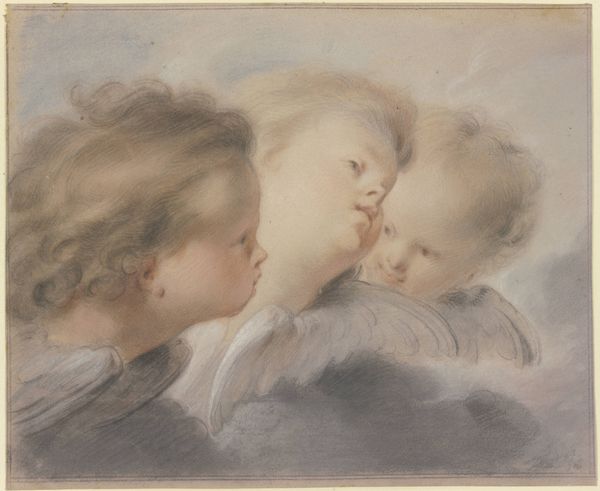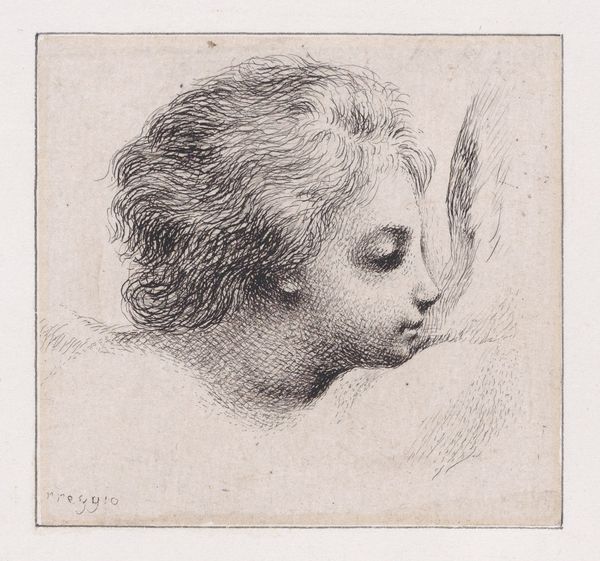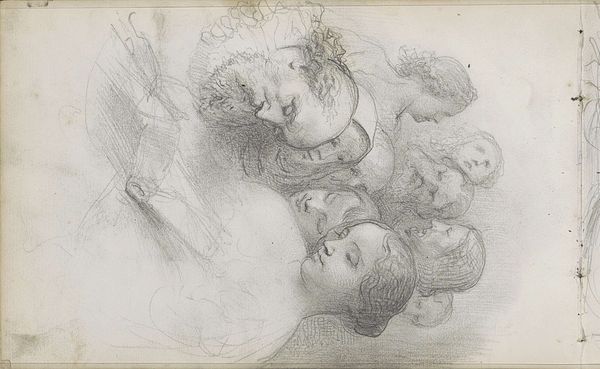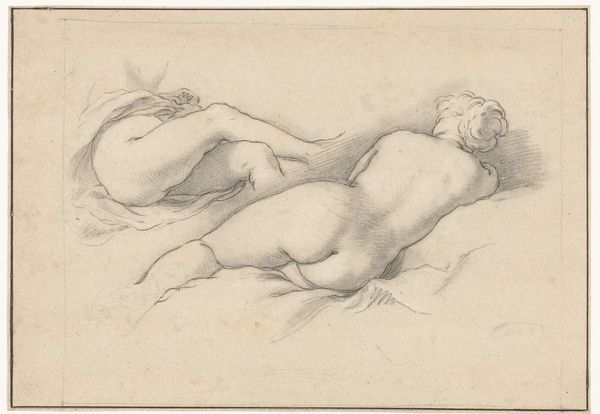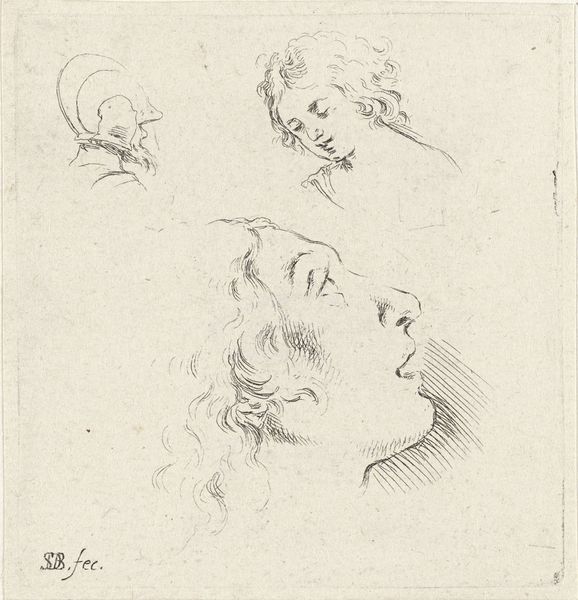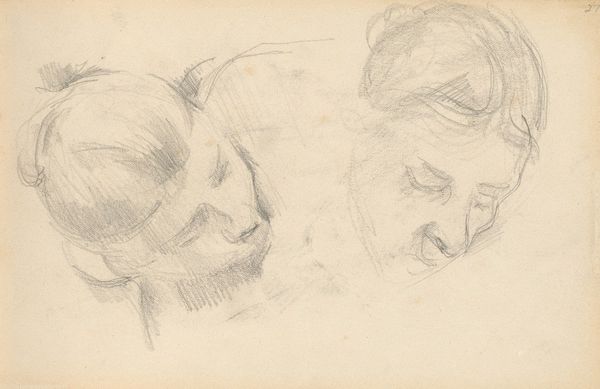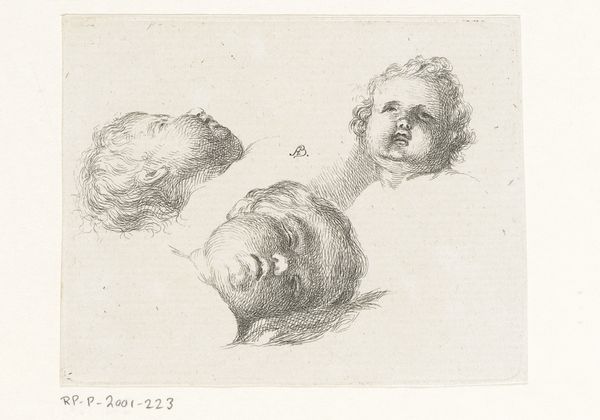
drawing, dry-media, pencil
#
pencil drawn
#
drawing
#
baroque
#
pencil sketch
#
charcoal drawing
#
dry-media
#
pencil drawing
#
pencil
#
portrait drawing
Dimensions: 206 mm (height) x 325 mm (width) (bladmaal)
Editor: This is "To barnehoveder," or "Two Children's Heads," a pencil drawing by Hendrik Krock, likely from the late 17th or early 18th century. It's so delicate; I'm really drawn to the softness of the lines. What strikes you when you look at this? Curator: I see a study in process and access. Pencil, at this time, wouldn't have been considered a high art medium like oil paint. Examining this work from a materialist perspective prompts us to consider Krock’s access to these materials, and who the drawings were made for. Was this a preparatory sketch intended for a larger composition, a means to quickly render form, or something else entirely? Editor: So, you're saying the *kind* of material impacts how we see it? That’s interesting – I tend to just think about how it *looks*. Curator: Precisely. Furthermore, we can consider the labor involved. A detailed drawing like this demonstrates considerable skill and time invested, even if intended as a preliminary work. Consider the social context: who had the time and resources to produce or acquire such images? This work might function to ennoble its sitters by rendering them akin to antique statuary; it may have served as tokens or patterns for production and dissemination. Editor: I hadn’t thought about the labor behind it, or what pencils even *meant* then. It does make you wonder about its purpose beyond just being a pretty drawing. Curator: Right. And how that purpose is tied into class, skill, and systems of production that went far beyond this singular artwork. We move past aesthetics and confront the practical elements. Editor: So, looking at the art as an object shaped by materials and social forces really opens it up. It makes art history feel much more connected to, well, *everything*. Curator: Exactly. By analyzing these connections, we get a deeper understanding of both the art and the society that created it.
Comments
No comments
Be the first to comment and join the conversation on the ultimate creative platform.
